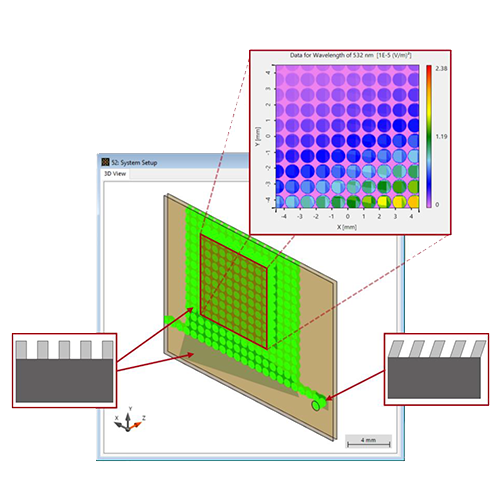Modeling the Effects introduced by the Real Structure of a Diffractive Lens in a Hybrid Eyepiece

Abstract
Hybrid lenses with both refractive and diffractive surfaces have become a promising solution for different applications. Here we demonstrate an example of a hybrid eyepiece, in which a diffractive lens modeled as a real surface is used to correct chromatic aberration. Propagation through the diffractive grating structure is handled with the Local Linear Grating Approximation (LLGA) electromagnetic field solver, with a combination of the Thin Element Approximation (TEA) and the Fourier Modal Method (FMM) as the base local solvers. An internal accuracy criterion controls which of the two algorithms is used at which lateral position.
VirtualLab Fusion Configuration
-
 VirtualLab Fusion
VirtualLab Fusion
-
 Flat Lens Package
Flat Lens Package
-
 Grating Package
Grating Package

